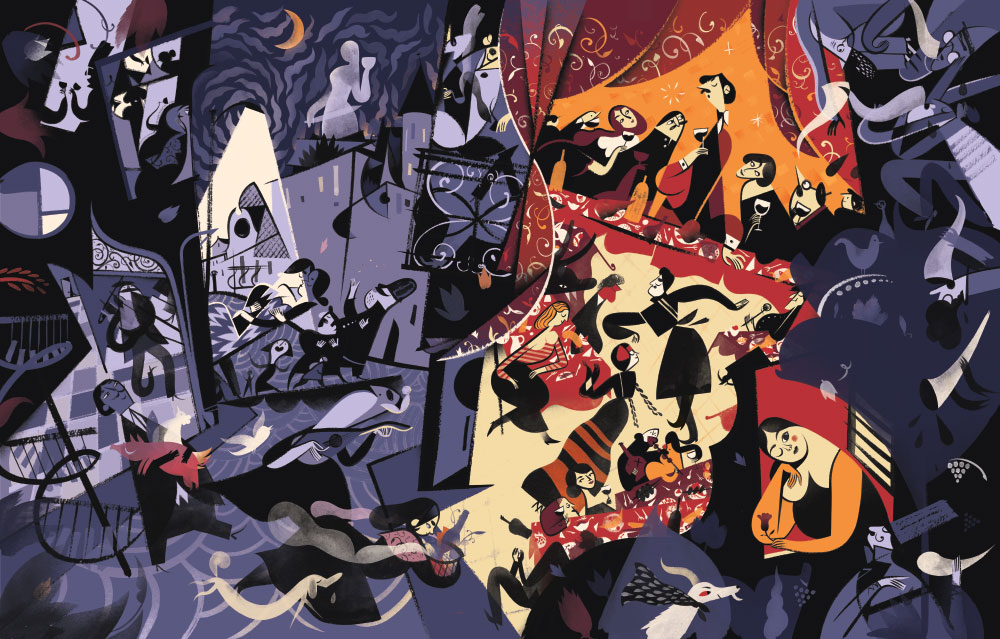A fine line: the illustrated worlds of Roman Muradov
The career of Russian illustrator Roman Muradov must be the envy of many others in his field: he draws for The New Yorker, The New York Times, GQ, The Wall Street Journal and Vogue, illustrates book covers for Penguin and Random House and has even created a Google Doodle. Until recently, however, he had never intended to pick up a pencil. “I originally studied petroleum engineering at the Gubkin university in Moscow, then worked for a couple of years in that field until depression and boredom inspired me to try something else,” says Muradov. “I had artistic impulses as a child but most of them were thoroughly repressed until my 20s. When I came to San Francisco I had no idea what kind of art I wanted to do, and in fact I’d say I only came to terms with being an artist this year.”

Muradov’s illustrations are endlessly likeable: they have wit, a sense of humour, and an attractive combination of skillful lines, deep colours and seemingly accidental strokes. They have a warm feeling of being drawn by hand (The New Yorker still keeps a working fax machine to enable some of their older illustrators to send their work in), but Muradov normally combines analogue and digital. “I draw everything on paper with brushes and pens, but then I assemble things digitally, which allows me to change colours and edit things out,” he says. “In the end it’s about 50/50.” When asked why people are so drawn to his illustration, he says, “I don’t know, are they? I suppose my drawings do have a musical quality and a pleasant balance between accident and design — at least that’s what people often mention.”
Another reason for the illustrator’s success might be his personal touch: it often seems that Muradov’s characters have their own expressions, intentions and thoughts. Does he grow attached to his creations? His favourite illustration for now is the cover of The Best American Nonrequired Reading. “Possibly because it just came out, but I imagine I’ll be less content with it in a year,” he says. The hardest undoubtedly was the Penguin cover for Dubliners: “It was a bit of a nightmare, since Joyce is my favourite writer and every brushstroke felt like an unnecessary intrusion.”
Despite his success, Muradov still keeps a bit of himself out of the illustrations, namely his greater artistic ambitions. “I keep the illustrator and the artist in me separate,” he says. “Illustration is great, and I try to imbue my commercial work with qualities of my personal art, but the latter will always have a special place in my heart. The comics and drawings I do for myself are a form of writing with images, they have nothing to do with self-expression or making attractive imagery, it’s rather an ongoing dialogue with myself that will never have a resolution and doesn’t really have a beginning either. I have no interest in searching for artistic truth and I find the futility of my art-making very comforting and satisfying.”
See more work by Roman Muradov at bluebed.net.